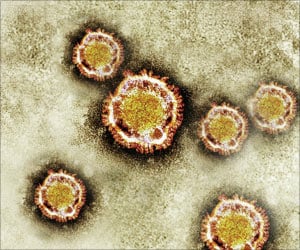The SARS epidemic changed the landscape in Hong Kong almost irreversibly.

The estate became a beleaguered symbol of the city's struggle to contain an outbreak of Severe Acute Respiratory Syndrome (SARS), named and declared a "worldwide health threat" by the World Health Organization on March 15, 2003.
Hong Kong eventually lost 299 of its citizens to SARS, part of a global death toll of nearly 800. The virus also infected around 1,800 in the city.
As panic spread as fast as the virus seemed to, Hong Kong's usually busy bars and restaurants emptied and its property market took a dive. The daily infection rate climbed globally as carriers travelled between countries.
Amoy Gardens became a ghost town cordoned off by police, with blaring ambulances and a swarm of health officials wearing full-body hazardous material suits, searching for the source of the outbreak.
By the end, 42 people from the estate died and a total of 329 residents had been infected.
Advertisement
"No one would come to Amoy Gardens. Even taxi drivers refused to take people here," Wilson Yip, the chairman of Amoy Gardens owners' joint committee, told AFP.
"People who lived there would be discriminated against in Hong Kong. If a hotel found out you came from Amoy Gardens you would be refused a room."
A government investigation later found that bathroom drains carrying contaminated sewage water through the residential complex were responsible.
Water travelled through interconnected sewage pipes before bathroom extractor fans sucked virus-contaminated droplets into apartments, spreading the disease from infected residents to their neighbours.
The Amoy Gardens outbreak was traced back to one infected man who had slept in his brother's flat in Block E and had suffered diarrhoea overnight before returning to Shenzhen.
Officials eventually lowered the daily infection rate by monitoring the health of people who knew virus carriers, enforcing home isolations and installing temperature detection equipment at borders and airports.
Hospitals offered accommodation to staff who did not want to risk transmitting the disease to family members, said Bing Lam, a doctor who worked in SARS isolation wards at the government-run Queen Mary Hospital.
"We were really on the front line. But I decided to go home at the end of each day, because you must have confidence in yourself regarding infection control."
SARS infected about 8,000 people around the world, claiming most of its victims in Mainland China, Hong Kong, Taiwan, Canada and Singapore.
The first case was detected in China's Guangdong province in November 2002 but information about it was not released until February 2003.
Experts say the paranoia that engulfed Hong Kong a decade ago has left a legacy that transformed lifestyles and hygiene standards across the city.
"Nowadays in Asia and Hong Kong, people are more aware of this disease and infectious diseases in general," said Lam.
Hong Kong authorities swung into action after the city reported its first swine flu case in 2009, cordoning off a hotel where an infected tourist had briefly stayed and putting 300 guests under one-week quarantine.
Today, easy-to-use disinfectant dispensers are found in nearly all buildings, subway stations carry hygiene tips and those suffering anything from a slight cough to a common cold are usually seen wearing face masks in public.
"At least people think about personal hygiene more," said Lam, who is now the respiratory centre director at the city's Sanitorium Hospital.
Yuen Kwok-yung, an infection diseases expert at Hong Kong University's Department of Microbiology said SARS changed the region's attitude towards infectious diseases.
"It changed the game," said Yuen, who helped identify the SARS coronavirus, enabling authorities to get to grips with the outbreak.
SARS quickly disappeared in the summer of 2003. Yuen believes similar diseases could be avoided in the future if people take more precautions.
Studies have later suggested that local horseshoe bat species, valued both as food and in Chinese medicine, carried a virus identical to SARS and passed it on to civet cats before it jumped the species barrier again to infect humans.
"You have enough things to eat already, why eat civets and bats?" said Yuen.
Yip said residents of Amoy Gardens, which has now been renovated, would immediately increase sterilisation procedures if the government announced an outbreak of swine or avian flu.
"If something like this happens again, we will be ready," he said.
Source-AFP







